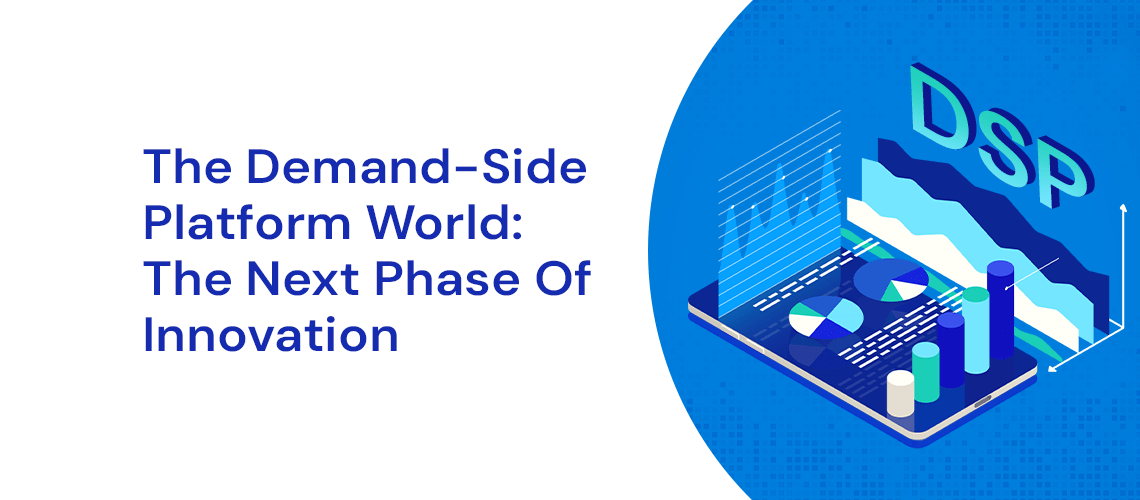Programmatic media buying is going to undergo a revolution in the next few years, and DSP’s (demand-side platforms) are facing their biggest challenge since the ad-buying technology platform emerged in 2007.
The arrival of AI and the demise of third-party cookies are the main drivers of change as new forms of ad creation and audience addressability challenge or threaten existing methods, and the demise of the Chrome third-party cookie reduces signal loss for advertisers. Throw in the roll-out of new state-based privacy legislation across the US, and the ad targeting world is clearly in flux.
Indeed, the latest IAB State of Data 2024 survey indicates that media buyers want innovation, because the new paradigm of signal loss will challenge targeting, personalization, and measurement.
More than half of those surveyed expect it to be harder to track conversions overall (55%), post-view conversions (52%), attribute campaign/channel performance (55%), measure ROI (55%), make optimizations (50%), and measure frequency (50%) and reach (47%). The report, which surveyed more than five hundred advertising and data experts at brands, agencies, and publishers, said in order to improve data quality many are turning to first-party data and data-enrichment tools.
Furthermore, nearly nine-in-ten ad buyers report shifts in personalization tactics, ad spend, and their mix of first, second, and third-party data. More than three-in-four cite selection changes in media channels and KPIs, along with more seller-direct deals.
The study also found that 71% of brands, agencies, and publishers are currently or planning to grow their first-party datasets, nearly twice the rate of just two years ago (41%).
“To tackle data quality challenges, it’s crucial for brands, agencies, and publishers to continue to adopt innovative analytical methods including Artificial Intelligence (AI), machine learning, and media mix modeling that are less dependent on tracking signals and third-party cookies,” said Angelina Eng, VP Measurement, Addressability & Data Center, IAB.
The Independent DSP's Fight Back

Signal loss means advertising budgets are already tilting toward the big walled gardens, and independent DSP’s need to deliver a compelling proposition to brands. The independent DSP market is fighting back, and offering new services in a bid to stay close with their bigger walled garden rivals.
Take Infillion, which acquired one of the first DSP’s, MediaMath, last year. Founded in 2007, MediaMath became one of the top independent buy-side platforms, until spectacularly falling into bankruptcy last year. Since swooping on MediaMath’s technology assets, Infillion has managed to rehire former employees, and undertake a launch of a new buy-side platform.
As part of Infillion, MediaMath said it has created the modern approach to media buying by identifying three essential components that a platform needs to meet the demands of today’s advertising ecosystem: customization, transparency, and flexibility. It’s also aiming to reduce wastage.
“Programmatic advertising grew fast—so fast, that it became difficult to rein in and streamline,” the company said in a recent paper called The Programmatic Frontier. “Now, with the proliferation of advanced advertising tools, combined with a more complex always-on customer journey, there are too many opportunities for waste and inefficiency.”
The media buying world is now extremely complicated, as evidenced by Infillion internal research, which says consumers are now influenced by eleven different touch points across their customer journey.
“Unfortunately, this has made life much more complicated for marketers, and that complexity only continues to grow and accelerate,” Infillion said. “Marketers now have to coordinate their messaging across many touch points and across many different channels in a way that is still consistent, meaningful, and impactful.
The company notes also: “The need to do this led to the proliferation of new ad platforms, measurement systems, metrics, and ad formats that are meant to address every aspect of this changed consumer behavior.
Infillion says while these are quite literally sold as “solutions,” in reality, it’s only created a new set of challenges for advertisers, in the form of stack complexity, or technology bloat.
“Today, the average marketer actually uses twelve different tool sets, and ten percent of marketers are using a whopping thirty. Whether it’s because they are dependent on expert resources to achieve any sort of efficiency, or need a large set of tech stacks from multiple vendors to achieve a simple goal, this complexity is leaving advertisers with costlier investments, less transparency, and increased latency across the board. And this means their strategy has to take a back seat.”
For savvy marketers and advertisers, the challenge is to find a precise way to spend their digital media budget efficiently, without getting bogged down by technology bottlenecks. They must aim for that goal while needing to spend on new cookieless solutions.
Meanwhile, the independent demand-side platforms are fighting for relevance in a market where the SSPs are moving higher up the value chain by offering cookieless curated audiences and SPO (supply path optimization) tools.
The demise of third-party cookies could have other far-reaching implications for demand-side platforms. Keith Gooberman, CEO & Co-founder at Programmatic Mechanics and Pontiac Intelligence, recently posited that with less cookies and audience signals, DSP’s risk becoming merely PMP (private marketplace) management tools. A massive drop in the volume of queries per second (QPS), and the ability to match fewer audience data segments for each display impression, could result in a reduction in DSP fees (take rates).
The Next Wave of DSP Innovation

For sure, if DSP’s cannot deliver scale and reach for marketers, they could struggle. The answer appears to revolve around providing additional value in their ability to work with Google’s Privacy Sandbox protocols, alternative identifiers, first-party data, and contextual advertising tools.
Judy Shapiro, CEO of Topic Intelligence, believes that the value provided by existing DSP’s will be threatened by cookie deprecation and they risk becoming only a media automation platform.
“The value is radically shifting to real audience signal data,” believes Shapiro.” I don’t mean the current faux contextual DSP that matches broad interest classifications or limited keywords.”
For the new breed of DSP’s, innovation will be vital, because the final version of the
Google Privacy Sandbox architecture may not level the playing field – it could reinforce the company’s dominant position. Meanwhile, the other giants are not standing still – Meta recently announced it would add a host of new retailer-focused updates for its Advantage+ and Facebook and Instagram mobile video business.
Finally, there is Generative AI, which could further upend the DSP space. As AdExchanger recently reported, the advertising world has reached the point where “a media planner can copy and paste a creative brief into a prompt field and watch a long list of potential URLs to target pop up”.
New contextual targeting tools have been developed by a number of smaller players that use generative pre-trained transformers (GPTs), to build contextual segments, the publication said. In short, these new start-ups scrape the web for consumer data that is privacy-compliant, and rely on AI models to better understand and analyze that data. Amid all the noise of the web, GPT-powered targeted tools make it easier and faster to see the content that is being read by their target audiences. That helps advertisers with their ad placement strategy.
The open web opportunity remains strong as advertisers look for alternatives outside the walled gardens. Innovation, whether it’s fueled by Artificial Intelligence or not, will determine the next tranche of demand-side platform winners.


